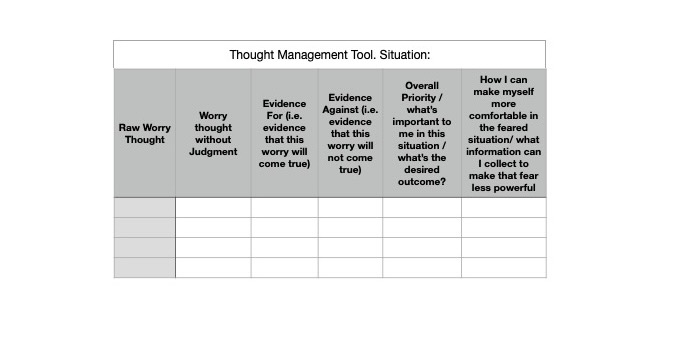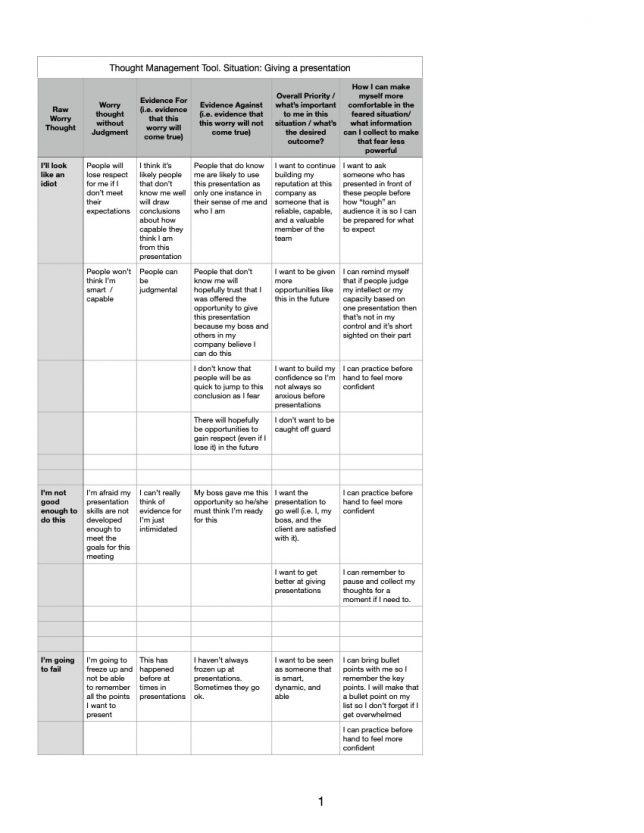- Many of us wrongly believe that “exposure therapy” is repeatedly putting ourselves in a feared situation in the hopes it will decrease our anxiety in that situation.
- I.e. “If I get on the plane enough times my fear of flying will go away”.
- While low-level anxiety often dissipates with repeated exposure, higher level anxiety is made worse or stays the same with this tactic.
- That’s because what makes exposure therapy effective is that the therapist exposes someone to a feared situation AND helps them have a different set of internal responses
- It is that repeated experience of being in a situation and having a DIFFERENT internal experience that can shift our relationship with the situation.
- An exposure therapist would NOT advocate for white knuckling your way through
Exposure therapy isn’t the only way to deal with fears of this nature, but the key for any and every individual to be aware of is that exposure therapy is not simply putting yourself in the situation time and time again and “pushing” through it. - If you want to work on a feared situation I’d encourage you to work to increase your awareness of where that line is between “high” and “low” anxiety situations
- In low-anxiety situations – sure – expose yourself. You may just need to get the hang of it.
- You can address high anxiety situations in a variety of ways including formal exposure therapy, standard therapy, working to build insight into what’s under the anxiety in an effort to help it dissipate, and increasing your mindfulness and grounding skills (info on those two in the comments).
I can’t tell you how many times a client has walked into my office talking about a struggle in a particular situation; a fear of flying, anxiety with public speaking, difficulties with crowds. Often, they tell me about how they have “white-knuckled” their way through this situation time and again in an attempt at “exposure therapy”. More often than not, they find it doesn’t work.
This is when I tell them that’s not how exposure therapy works. When a therapist is helping a client with an exposure the therapist is both EXPOSING the client to the situation they struggle with AND helping them have a DIFFERENT internal experience while doing so. It is that repeated experience of being in the situation and having a DIFFERENT internal experience that can shift our relationship with the situation.
For most of us, if we knew how to have a different internal experience while in the situation we would have done that long ago. What may feel intuitive to us in those moments (and perhaps not in our control) is to have the reaction we’ve always had.
Getting on the plane 35 times in an effort to expose yourself to a feared situation in the hopes it will neutralize (or numb) you to it can work with situations where you feel anxiety in a low intensity manner (i.e. think about performance anxiety where we are jittery the first few times, but with repeated experience we get more and more comfortable). With higher intensity anxiety you may actually be reinforcing (i.e. strengthening or making worse) the anxious response by exposing yourself to it without having built up coping strategies or skills for how to manage your internal world while you are exposed to the situation.
What I can do with my clients, and what you can do too, is work know ourselves well enough to know where that line is between the “low(er)” anxiety situations and the “high(er)” anxiety situations. When our anxiety is lower we often just need to stick with it and get the hang of it. You should notice yourself feeling less and less anxious over time. When anxiety is higher, the anxiety doesn’t change or get worse with repeated exposure. That’s a cue not to keep going without a different set of internal responses.
Notes:
- How much anxiety we feel in a certain situation can vary based on a variety of factors. I.e. one day a situation might be “low intensity” and the next day the same situation might be “high intensity”. The key here is to work to pay attention to knowing your own anxious cues and responding to what they tell you.
- I am not a specialist in exposure therapy, and in fact when I have clients in need of this type of treatment I will send them to a specialist for a series of sessions to work with someone in the situation they are struggling with to come up with strategies specific to their situation and their needs. This is often short-term work and it can be done alongside a longer therapy.
- One tactic you can try if you want to try building that different set of internal responses is strengthening your grounding based skills (those help combat anxiety by keeping you in the present) and mindfulness skills (those both keep you in the present and help you increase your ability to control your attention. Both Mindfulness and Grounding will help you “tame” your anxiety in those moments, though there are many more skills and techniques that an exposure specialist could work with you on (sometimes in as little as 4-6 sessions) if you’re really stuck with something.



